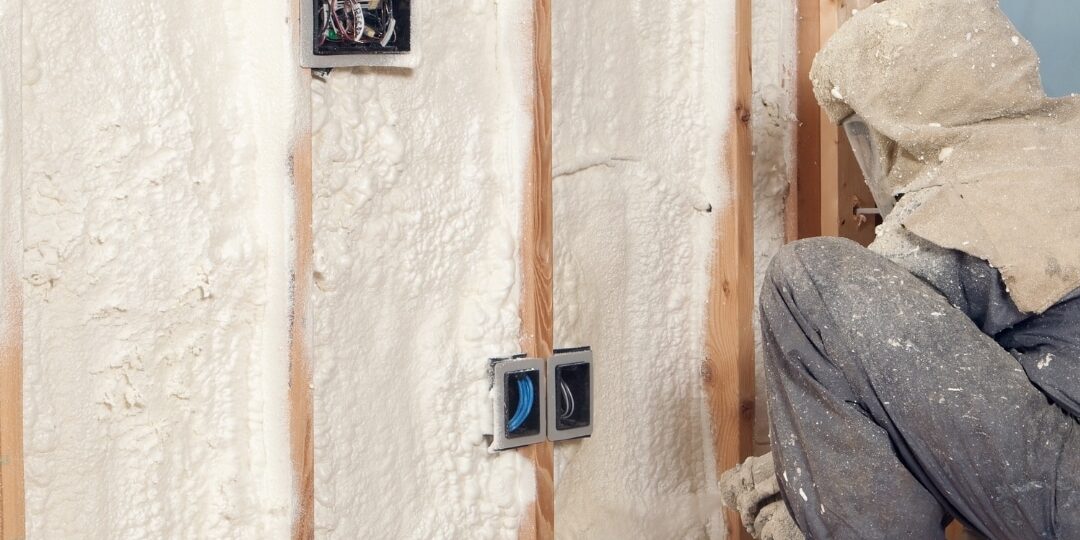Including How to Upgrade Wall Insulation Without Major Renovations
Proper insulation plays a key role in maintaining comfortable temperatures inside your home year-round. Yet many homeowners don’t realize that their exterior walls may be the source of rising heating bills, cold drafts, and uneven temperature differences from room to room. Poor or inadequate insulation allows warm air to escape in winter and lets hot outdoor temperatures penetrate your living space in the summer, placing extra strain on your air conditioner and wallet.
This month, we’re tackling one of the most overlooked issues in home energy performance: wall insulation. We’ll show you how to identify the signs of insulation problems, explain your options for improving it—without tearing down your walls—and how our insulation experts at Insulation Pros can help.
Signs Your Wall Insulation May Be Failing
When insulation issues go unchecked, your home becomes vulnerable to heat loss, moisture problems, and high energy use. Here are the most common indicators of insufficient insulation in walls:
- Cold walls or hot spots depending on the season
- Noticeable temperature differences between rooms
- Cold drafts near window frames, light switches, or electrical outlets
- Rising energy costs and high heating bills
- Frequent cycles from your air conditioner or furnace
- Ice damming on your roof, which may point to attic solutions or wall deficiencies
- Unusual levels of noise coming through walls
- Signs of pests, dust, or dirt near gaps around windows or doors
If your home has visible insulation in some areas but still suffers from air leaks, it may also have exterior wall insulation problems such as bad insulation, outdated insulation types, or simply not enough insulation for your climate.
How Wall Insulation Works (And Why It Matters)
Insulation slows air movement and heat transfer through your home’s exterior walls, helping maintain a consistent temperature inside. The better your insulation material and installation, the less air escapes, and the more energy you save.
However, not all insulation types perform equally. For example:
- Loose-fill insulation like cellulose or fiberglass can settle over time, reducing effectiveness.
- Spray foam insulation fills cracks and crevices, making it great for sealing air leaks.
- Foam board or rigid foam insulation is ideal for new builds or exterior wall applications.
- Foil insulation can be useful in hot climates for reflecting radiant heat.
- Traditional insulation materials like fiberglass batts may need insulation replacement over time.
Proper insulation isn’t just about R-value—a well-sealed and insulated home accounts for moisture control, durability, and overall energy efficiency.
Wall Insulation Upgrades Without Major Renovations
Many homeowners hesitate to tackle wall insulation because they assume it requires tearing out drywall or reconfiguring their living space. Fortunately, there are minimally invasive methods available that improve insulation without disrupting your day-to-day life.
Drill-and-Fill Insulation
This method involves drilling small holes in your home’s exterior walls or interior drywall and blowing in loose-fill insulation like cellulose or fiberglass. It’s ideal for older homes with inadequate insulation and offers significant improvements in energy performance.
Injection Foam Insulation
This method injects spray foam insulation into wall cavities, where it expands to seal cracks and gaps. It’s excellent for stopping air leaks around window frames, floor joists, and within the joist space itself—especially helpful in combating cold drafts and air escapes.
Insulation During Renovations
If you’re already removing drywall for a remodel, this is the perfect time to install additional insulation such as foam board, mineral wool, or rigid foam insulation. These materials provide long-lasting, high-performance thermal protection and also help reduce sound transmission.
Bonus Tip: Safety First
For any DIY insulation project, make safety a priority. Always wear safety goggles, gloves, and a mask when handling insulation. Mishandling materials—especially fiberglass—can cause skin irritation and respiratory problems. If you’re unsure about safety or technique, it’s best to call in insulation experts to avoid unnecessary safety hazards.
Why Wall Insulation Is Worth the Upgrade
Investing in proper insulation for your walls can result in:
- Lower heating and cooling bills
- Better energy efficiency throughout the home
- Fewer temperature differences and more comfortable temperatures
- Less wear on HVAC systems
- Fewer pests entering through walls or gaps
- Enhanced resale value for energy-conscious buyers
Trust the Experts at Insulation Pros of Colorado
At Insulation Pros, we specialize in helping homeowners like you solve insulation issues the smart way—with efficient, affordable insulation services that deliver results. We proudly serve Colorado with:
- Free energy assessments and insulation inspections
- Professional installation using top-quality insulation materials
- Solutions tailored to your exterior insulation, basement wall insulation, and attic insulation needs
- A 10-year labor warranty on all work
- Discounts for first-time customers
We’re here to help you create a warmer, quieter, and more efficient home—without major renovations.
Ready to fix your wall insulation problems?
Call Insulation Pros of Colorado today at (970) 680-4875 or fill out our online contact form to schedule your free estimate. Let’s build a better barrier between your home and the extreme temperatures outside.








